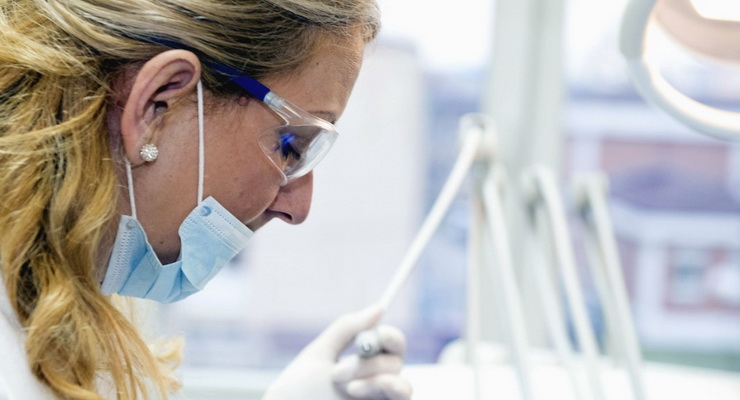Una nuova protesi per rigenerare legamenti e tendini / A new prosthesis to regenerate ligaments and tendons
Una nuova protesi per rigenerare legamenti e tendini / A new prosthesis to regenerate ligaments and tendons
Segnalato dal Dott. Giuseppe Cotellessa / Reported by Dr. Giuseppe Cotellessa

Si tratta di un dispositivo impiantabile, un supporto che permette di riparare i tessuti danneggiati riportandoli alla loro struttura originale, riassorbendosi gradualmente. Il prototipo dell'Università di Bologna.
Un dispositivo impiantabile che permette di prima di sostituire e poi di rigenerare il tessuto di un tendine o di un legamento danneggiato. È la nuova protesi inventata da un gruppo di ricercatori dell’Università di Bologna: un supporto – tecnicamente noto come scaffold – in grado di riprodurre le caratteristiche meccaniche, morfologiche e fisiologiche non solo il tendine e il legamento, ma potenzialmente anche il tessuto muscolare e nervoso. Il prototipo è stato presentato all’evento internazionale Biovaria di Monaco di Baviera, che riunisce ricercatori, rappresentanti del mondo dell’industria e del trasferimento tecnologico.
Dopo essere stato impiantato in corrispondenza dell’area danneggiata, lo scaffold viene colonizzato dalle cellule che riproducono così progressivamente il tessuto nella sua struttura originale. Nella forma messa a punto dai ricercatori, il dispositivo di supporto si degrada naturalmente lasciando così spazio ai tessuti rigenerati. Ma cambiando il materiale utilizzato, è possibile utilizzare la stessa tecnologia anche per produrre protesi non riassorbibili, in grado di sostituirsi definitivamente a tendini o legamenti non più riparabili.
Fibre nanometriche
Quello ideato dal gruppo di ricerca bolognese è una protesi, ad oggi unico al mondo, basata su un metodo di produzione innovativo. “Per realizzarla abbiamo utilizzato la tecnologia dell’elettrofilatura – nota come electrospinning – che permette di produrre fibre di diametro nanometrico”, racconta Alberto Sensini, uno dei ricercatori coinvolti. “In questo modo siamo riusciti a realizzare un dispositivo in grado di simulare tutti gli elementi che compongono un tendine o un legamento umano”.
A differenza del tessuto osseo, infatti, la struttura di tendini e legamenti è estremamente complessa, tanto che fino ad oggi nessuno era riuscito a riprodurla in modo così accurato. “La struttura del nostro scaffold riproduce fedelmente quella del tessuto tendineo e legamentoso umano, anche nelle sue proprietà meccaniche”, conferma Sensini. “Essendo poi biocompatibile, biodegradabile e riassorbibile, permette di riparare e ricostruire i tessuti lesionati, ripristinandone l’originale funzionalità”. Uno strumento che, come si può immaginare, potrà rivelarsi particolarmente utile sia in campo chirurgico che nel settore biomedicale.
Un prototipo avanzato
La tecnologia messa a punto dai ricercatori dell’Università di Bologna è oggi in una fase avanzata di prototipo, anche grazie a collaborazioni con alcuni tra i massimi esperti internazionali nel campo della tomografia a raggi-X e delle colture cellulari, come Gianluca Tozzi, direttore dello Zeiss Global Centre dell’Università di Portsmouth (Regno Unito), e Gwendolen Reilly dell’INSIGNEO – Institute for In Silico Medicine dell’Università di Sheffield (Regno Unito).
Gli autori del prototipo sono Alberto Sensini, Luca Cristofolini, Juri Belcari e Andrea Zucchelli del Dipartimento di Ingegneria Industriale e da Chiara Gualandi e Maria Letizia Focarete del Dipartimento di Chimica “Giacomo Ciamician”.
Riferimenti: Università di Bologna
ENGLISH
It is an implantable device, a support that allows to repair damaged tissues bringing them back to their original structure, gradually absorbing. The prototype of the University of Bologna.
An implantable device that allows first to replace and then regenerate the tissue of a damaged tendon or ligament. It is the new prosthesis invented by a group of researchers of the University of Bologna: a support - technically known as scaffold - able to reproduce the mechanical, morphological and physiological characteristics not only the tendon and the ligament, but potentially also the muscle tissue and nervous. The prototype was presented at the Munich Biovaria international event, which brings together researchers, representatives from the world of industry and technology transfer.
After being implanted in the damaged area, the scaffold is colonized by cells that progressively reproduce the tissue in its original structure. In the form developed by the researchers, the support device naturally degrades, thus leaving space for the regenerated tissues. But by changing the material used, the same technology can also be used to produce non-resorbable prostheses, which can definitively replace tendons or ligaments that can no longer be repaired.
Nanometer fibers
The one devised by the research group in Bologna is a prosthesis, to date unique in the world, based on an innovative production method. "We used electrospinning technology - known as electrospinning - to produce nanometer-diameter fibers," says Alberto Sensini, one of the researchers involved. "In this way we have succeeded in creating a device able to simulate all the elements that make up a tendon or a human ligament".
In fact, unlike the bone tissue, the structure of tendons and ligaments is extremely complex, so much so that until today nobody had managed to reproduce it in such an accurate way. "The structure of our scaffold faithfully reproduces that of human tendon and ligament tissue, also in its mechanical properties", confirms Sensini. "Being then biocompatible, biodegradable and resorbable, it allows to repair and reconstruct the damaged tissues, restoring their original functionality". An instrument that, as you can imagine, will be particularly useful both in the surgical field and in the biomedical field.
An advanced prototype
The technology developed by researchers at the University of Bologna is today in an advanced prototype phase, thanks to collaborations with some of the top international experts in the field of X-ray tomography and cell cultures, such as Gianluca Tozzi, director of the Zeiss Global Center of the University of Portsmouth (United Kingdom), and Gwendolen Reilly of the INSIGNEO - Institute for In Silico Medicine of the University of Sheffield (United Kingdom).
The authors of the prototype are Alberto Sensini, Luca Cristofolini, Juri Belcari and Andrea Zucchelli of the Department of Industrial Engineering and Chiara Gualandi and Maria Letizia Focarete of the "Giacomo Ciamician" Department of Chemistry.
References: University of Bologna
Da:
https://www.galileonet.it/2018/09/protesi-rigenera-legamenti-tendini-prototipo-italiano/?utm_campaign=Newsatme&utm_content=Una%2Bnuova%2Bprotesi%2Bper%2Brigenerare%2Blegamenti%2Be%2Btendini&utm_medium=news%40me&utm_source=mail%2Balert



Commenti
Posta un commento